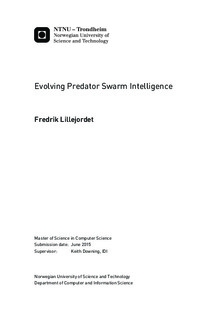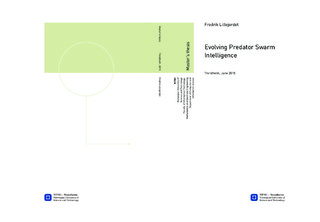| dc.description.abstract | This master thesis investigates the evolution of predator swarm intelligence in predator- prey relationships. It aims to prove that we can evolve more efficient behavior than a set of simple rules in simulated environments. The thesis concludes that this can be achieved by combining vision models, genetic algorithms and artificial neural networks. The combination is well suited for swarming problems; where size, combinations and constant change makes it very complex to design simple rules. Our world is full of problems like this, where swarm intelligence and swarm robotics can provide effective solutions. Experiments investigate if and how performance is affected by changes in group size or environmental factors such as wall sight and noise. If robots are supposed to live in the real world, they need to be able to learn in realistic simulated environments. An observational study experiment is done in addition to simulated experiments; it shows that the evolved swarms clearly display intelligent swarming behavior. | |

